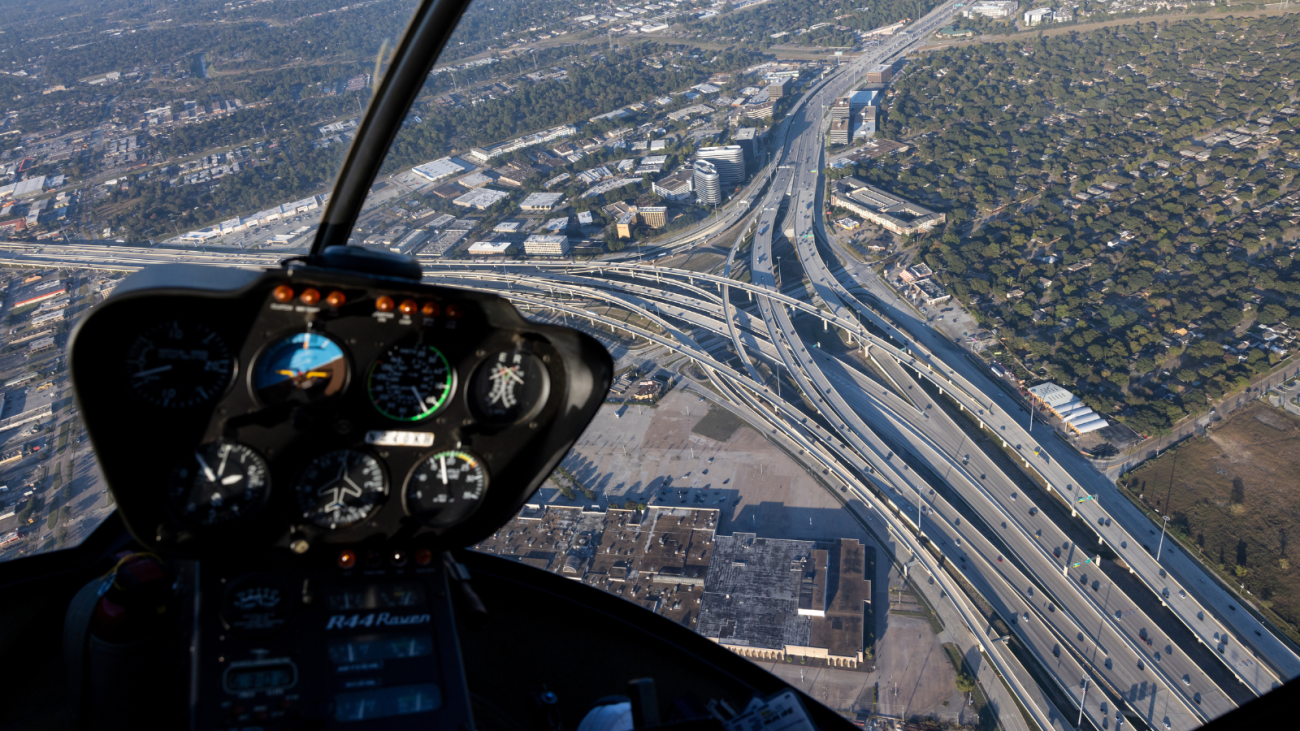World-renowned photographer to lecture and unveil new body of work for Houston Archive Project
HOUSTON, TX — The Rice School of Architecture is proud to announce the opening of Iwan Baan: The Notational Surface, an exhibition by acclaimed Dutch photographer Iwan Baan, launching September 3, 2025. Presented as part of the school’s new curatorial program, Exhibitions at Rice in Cannady Hall, the show will kick off with a public lecture by Baan at 5:00 p.m., followed by an exhibition opening reception from 6:00 to 8:00 p.m. The show will remain on view through October 25, 2025.
The Notational Surface presents a sweeping new body of photographic work developed by Baan over the past five years. Capturing Houston from both the ground and air, the project offers a layered view of the city’s infrastructure, environmental precarity, and spatial complexity.
“Baan approaches contemporary urbanism with a profound appreciation not only for the architecture of singular structures, but also for the planetary systems between and beyond them,” said Igor Marjanović, William Ward Watkin Dean of the Rice School of Architecture. “His photographs remind us that every urban condition is also a representational project—and that the city can be read, reimagined, and ultimately, reshaped.”
The exhibition was developed in collaboration with graphic designers Experimental Jetset (Amsterdam) and exhibition designers Departamento del Distrito (Houston/Mexico City). The show unfolds across two floors of Cannady Hall, shifting viewers’ perspectives from the intimate scale of street life to expansive aerial views of Houston’s oil infrastructure, intermodal networks, and sprawling suburbs. Printed on industrial blue-back affiche paper and suspended at sharp angles, the photographs create a spatial experience that challenges visitors to see the city—and the forces that shape it—through a new lens.
A full-color exhibition catalog will accompany the show, featuring a foreword by Dean Marjanović and an essay by architect and theorist Clare Lyster, whose interpretive framework gives the exhibition its title. In Lyster’s view, Baan’s work reads the city as a series of “notations” across a flat terrain, visible only from above—grids, dots, lines, and traces that point to larger economic, ecological, and cultural patterns.
The images will also be featured in the school’s annual publication, Sphere, later this Fall as part of the Houston Archive Project–an ongoing effort to document the city’s rapid transformation and urbanization. The Rice School of Architecture launched the Houston Archive Project in 2024 to create a planetary platform for architectural thinking grounded in the specificity of place. The project adds to a lineage of photographic archives begun by the school in the 1990s, when it invited Alex MacLean and Luciano Rigolini to document Houston’s shifting urbanism.
“Houston is a lens through which we can examine global environmental and social conditions,” Marjanović said. “This exhibition is a call to look at the world differently—to engage with representation not just as record, but as a provocation toward more just, imaginative futures.”
EVENT DETAILS
Iwan Baan: The Notational Surface
Lecture: Wednesday, September 3, 2025, 5:00 p.m.
Opening Reception: 6:00–8:00 p.m.
Exhibition Dates: September 3 – October 25, 2025
Location: Exhibitions at Rice, Cannady Hall, Rice School of Architecture
Admission: Free and open to the public
For more information, visit arch.rice.edu/events. To purchase a copy of the catalog or the school’s annual publication, Sphere, please e-mail arch@rice.edu.
About Exhibitions at Rice
As the curatorial program of the Rice School of Architecture, Exhibitions at Rice uses the lens of design research to look at the world differently. Mobilizing a full spectrum of architectural representation—including drawing, imaging, making, and prototyping—this program weaves together scholarly inquiry, visual experimentation, and public engagement. Across all scales, from objects to buildings, cities, and the planet, Exhibitions at Rice engages the discipline of architecture as a cultural practice with a civic mandate, creating new discourses for both local and global audiences.











